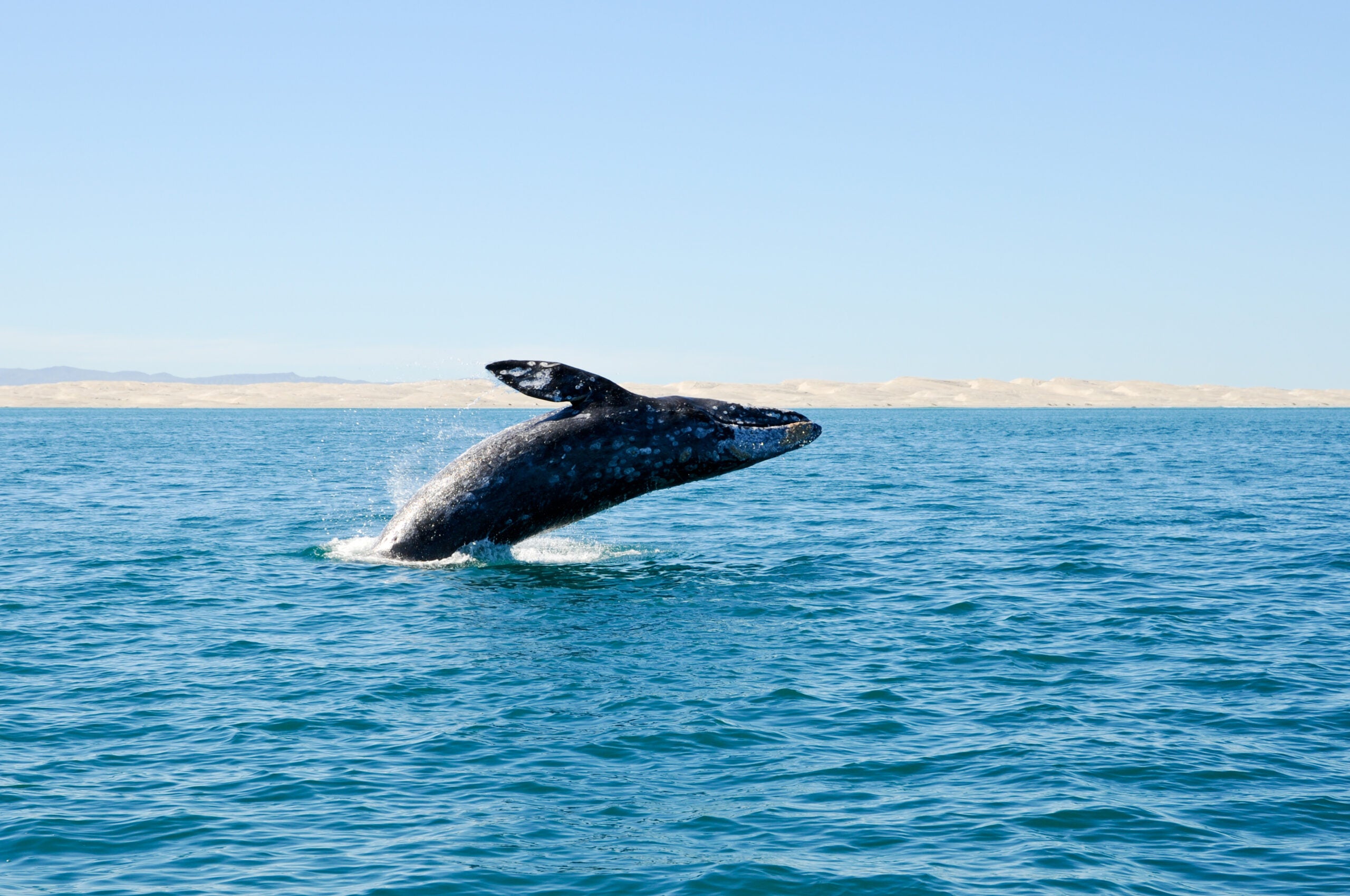Underwater Mining in Mexico Threatens Gray Whale Nursery
The region’s first proposed underwater phosphate mine will expose thousands of migrating whales and sea turtles to potential harm.

This page was published 9 years ago. Find the latest on Earthjustice’s work.
This is a guest post contributed by Haydée Rodríguez. Haydée is an environmental law attorney with a master’s in environmental science and public policy from Columbia University, New York. Based in San José, Costa Rica, Haydée has been working for AIDA on marine protection, freshwater and mining issues since 2013.
Each year, gray whales set out on one of the longest migratory journeys on the planet: a nearly 13,000-mile swim from their feeding grounds in Alaska to the warm waters of Baja California Sur in Mexico. In Baja California Sur whales birth and raise their calves—after which they turn around and swim back again. Experts estimate that by the time a gray whale turns 50 it has traveled the distance from the earth to the moon and back.
In Mexico, this impressive, 50-foot mammal could soon run into harm from one of the world’s first proposed marine phosphate mines. If the project gets the green light, the mine could gravely damage the environment near an area where grey whales breed and nurse during winter months.
Last February, more than 2,600 grey whales arrived at the San Ignacio and Ojo de Liebre lagoons in Baja California Sur, on the Pacific Coast of Baja California and close to Ulloa Bay. This was the highest number of whales recorded in the past 19 years. The whale migration provides an important source of income for local families who depend on tourism dollars from whale watchers.
It is also in this area—specifically, near Ulloa Bay—that the American company Odyssey Marine Explorations hopes to start the Don Diego phosphate mine. The proposed mine would include five work sites, each of which would be exploited for 10 years, resulting in a 50-year-long project. The goal is to extract 350 million tons of phosphate sand from the marine floor—a quantity that would fill Mexico City’s Aztec Stadium 264 times.
Grey whales, as well as humpback and blue whales and loggerhead turtles that live in or pass through the zone, depend on sound to communicate, stay together and find food. The Don Diego project will use dredging to collect the phosphate sand, producing a lot of noise in the process. Even the company’s own environmental assessment conceded the mine could create a “modification of vocal behavior or surprise reaction” in the whales. The noise could jeopardize the whales by causing changes in their behavior and migration route.
Moreover, large boats will dredge the seabed to extract sand, but also living organisms. The dredged material will be separated to obtain phosphate, and the leftover material dumped back into the sea. The sediments returning to the ocean may contain high levels of toxic elements such as uranium and thorium, which are exposed during the phosphate-separation process. These toxins may be consumed by fish that then arrive on our tables, making phosphate mining a potential source of radioactive contamination.
In September 2014, Odyssey presented its Environmental Impact Assessment to Mexico’s Secretariat of Environment and Natural Resources. AIDA presented comments on the Don Diego environmental assessment before the secretariat, spotlighting the ecological reasons the project should be shelved and requesting more detailed information from the company.
The Commission for Environmental Cooperation, which includes the United States, Mexico and Canada, recently voted against a request that the nations investigate whether Mexico appropriately considers the environmental risks of proposed projects with coastal impacts. Now, Mexico has the opportunity to demonstrate that it is in fact a good steward of the oceans by rejecting the Don Diego plan. A pristine marine area favored by tourists, sensitive ecosystems and the continued well-being of the grey whale depend on the decision the Mexican government is about to make.
In places such as Namibia and New Zealand, after analyzing similar projects, governments revoked permissions or declared a moratorium on phosphate mining until the industry can show it does not cause grave environmental harm. The Mexican government should follow their example and err on the side of caution.
Without a doubt, it’s better to prevent damage than to be sorry once it’s done. After all, the gray whale still has many thousands of miles left to swim.
The International Program partners with organizations and communities around the world to establish, strengthen, and enforce national and international legal protections for the environment and public health.